If You Give A Maggot A Cookie…
6:19 minutes
We think of maggots as the insects that consume dead flesh. But these days, people are thinking about how to put those voracious eaters to good use before we die. That means we have to get over the ick factor and actually study these creatures. What do they eat, when do they eat, how much do they eat, and at what rate?
[Need a break from this world? These 10 books will transport you.]
Luckily there’s at least one intrepid researcher who is willing to do this work—Dr. David Hu, associate professor of mechanical engineering and biology at Georgia Tech. He explains why maggots are such efficient eaters in our latest Macroscope video.
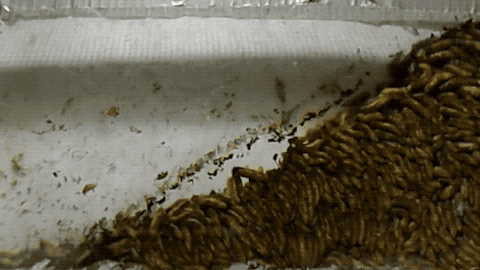
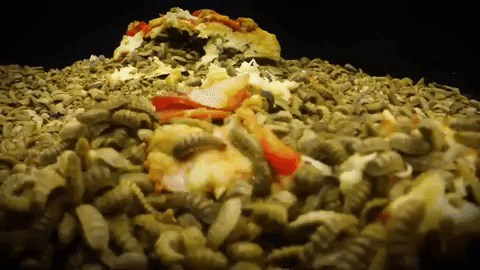
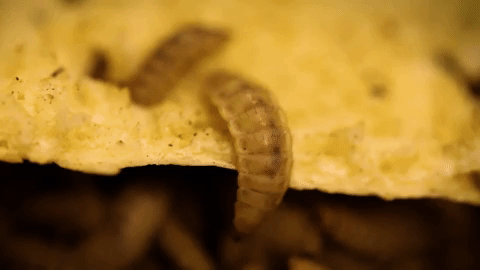
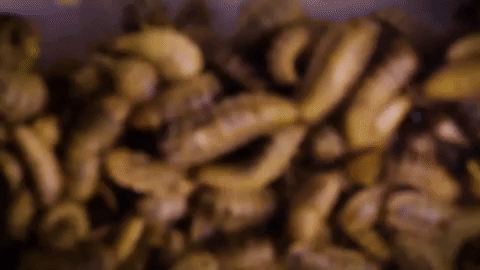
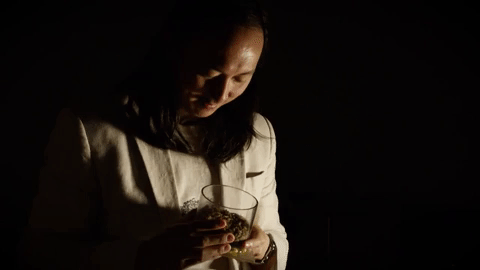
Luke Groskin is Science Friday’s video producer. He’s on a mission to make you love spiders and other odd creatures.
SERGEANT HARTMAN: I am Gunnery Sergeant Hartman, your senior drill instructor. From now on, you will speak only when spoken to, and the first and last words out of your filthy sewers will be sir. Do you maggots understand that?
GROUP: Sir, yes, sir.
IRA FLATOW: Remember that scene from Full Metal Jacket where the drill sergeant can find no more insulting form of life to call them than a maggot. But we’re here to tell you that the lowly maggot has gotten a bad rap. Sure, we think of maggots as insects that consume dead flesh, but maggots will eat just about anything from poop to pizza. And now some forward looking people are thinking about how to put these voracious eaters to good use.
And that means we have to get over the ick factor and actually study these creatures. What do they eat? When do they eat? How much and at what rate do they eat? Luckily, there is at least one intrepid researcher willing to do this work. Dr. David Hu and his maggot research is the subject of our latest Macroscope video. Joining me to talk about it is Luke Groskin, our Science Friday video editor. Hi Luke.
LUKE GROSKIN: Hi, Ira.
IRA FLATOW: So why do we want to know so much about how maggots eat?
LUKE GROSKIN: Yeah. It’s the burning question in all of our minds, right? So consider this, we waste a lot of food. I mean a lot of food, and you know. Where does that food go? It ends up in a landfill. And what happens to that food in a landfill? Well, it’s a lot more disgusting than a swarm of maggots. It becomes this black, slimy, polluting stuff that ends up in our waterways.
Well, we’ve got to get that stuff out of the landfill. We shouldn’t put it in there in the first place. We should probably feed it to something. How about some maggots?
IRA FLATOW: Ooh.
LUKE GROSKIN: Because they eat really, really fast, and what can you do with those maggots when you’re done? You can turn them into chicken feed, or you can feed them to fish on farms. I mean, right now, we feed fish on farms ground up byproduct of fish that’s caught in the wild. That seems pretty wasteful. So you know you can become a lot more sustainable with food waste if you take advantage of these maggots, and that’s what a lot of companies down in the South are actually doing in Georgia, in Texas. They actually have these black soldier fly farms, and they have a lot of questions about how quickly can they grow, and all that.
And Dr. David Hu at Georgia Tech wants to answer some of those questions, and you know, he starts by looking at the biology of them. And there’s some very interesting aspects about them.
DR. DAVID HU: The black soldier fly larva eat twice their body mass in a day. So in growing these larva, one of the big questions is how quickly can they eat, because the whole idea is to allow them to eat as much food as possible. And so if you have more and more larva, is food just consumed just as quickly?
IRA FLATOW: That’s a good question. This is Science Friday from WNYC Studios. Talking with Luke Groskin. So he’s actually playing around with all these maggots?
LUKE GROSKIN: Yeah, he’s got swarms and swarms of maggots.
IRA FLATOW: But on the other hand, I know from watching this video it starts out with puppies. I can’t imagine what puppies or maggots have to do with each other.
LUKE GROSKIN: Ira, have you have you heard of the Puppy Bowl problem? No, it’s not the thing on Animal Planet where they have the dogs during the Super Bowl at half time.
IRA FLATOW: No, no. I’ve never heard of it.
LUKE GROSKIN: OK, so imagine some cute puppies, 10 really, really cute puppies. See, that’s a nice refreshing break from the maggots, right? So the 10 cute puppies are given a very, very small bowl of food. And then they have to decide who gets to eat first and when they eat and how much they get to eat, and it’s a small bowl. So they’re piling up all over each other. They’re swarming around trying to get at the food. And this is known as, in some circles, as the dog bowl problem or the puppy dog bowl problem.
And it applies all sorts of things you know from economics to parking spots around a building.
IRA FLATOW: And maggots?
LUKE GROSKIN: And maggots. So when you have a large swarm of maggots, and you just plop an orange down in the middle of them, how quickly does that orange get eaten? You can only fit a certain amount of maggots eating in a given time. And then compounding the problem is that the maggots don’t eat as quickly as you would think. They actually spend three-fourths of an hour not eating. So how do the maggots actually solve this? Well, David Hu actually did a whole bunch of tests, and this is what he discovered.
DR. DAVID HU: Individual larva can be activated by the motion of their neighbors. If a single larva takes a bite of food, it is super activated. And it continues to swarm around and look for food, and they actively move out these blockades, these larvae that are sitting around and not eating. And that helps other larvae get to the food. It’s kind of like a buffet line, people are sort of pushing them out of the way, just so each of them grabs one bite. You can imagine the buffet line would be eaten much faster.
IRA FLATOW: And then looking at the macroscope of all these larvae go swimming around there. If you watch it a while long enough, you get over the ick factor. I mean I did.
LUKE GROSKIN: Well, I started viewing them more as insect puppies. Wen I started thinking of them that way, yeah I got over it. But then again, I’ve been watching hours and hours of swarming maggots. They may have gotten into my brain, and that might explain why I view them now as insect puppies.
IRA FLATOW: But you’re not having nightmares about them. Are you having nightmares?
LUKE GROSKIN: Oh no, totally.
IRA FLATOW: You do?
LUKE GROSKIN: Yeah, absolutely. But at the end of the day, I have to remind myself that this is a very good solution to a very, very bad problem. And if we can feed these maggots this food waste and then turn them into food for chickens, that’s great.
IRA FLATOW: They normally eat maggots, chickens.
LUKE GROSKIN: Absolutely.
IRA FLATOW: Out in the wild, that’s what they like to eat.
LUKE GROSKIN: Yeah, I mean they’re really high protein, the maggots. I think they’re somewhere near 40% protein and a lot of fat. That’s really good for chickens. That’s really good for fish. That’s way more sustainable than feeding them feed, you know, processed feed from other sources.
IRA FLATOW: So this is a viable project.
LUKE GROSKIN: Absolutely. This is absolutely a viable project, and there’s lots of companies that are starting it up, and they want to scale up. So there’s a lot of questions about how to do that.
IRA FLATOW: Well, and you can get a good start by checking out the latest Macroscope video, and you should. You can find them on our website at sciencefriday.com/maggots. Thank you, Luke. Great video.
LUKE GROSKIN: Thank you.
Copyright © 2018 Science Friday Initiative. All rights reserved. Science Friday transcripts are produced on a tight deadline by 3Play Media. Fidelity to the original aired/published audio or video file might vary, and text might be updated or amended in the future. For the authoritative record of Science Friday’s programming, please visit the original aired/published recording. For terms of use and more information, visit our policies pages at http://www.sciencefriday.com/about/policies/
Katie Feather is a former SciFri producer and the proud mother of two cats, Charleigh and Sadie.